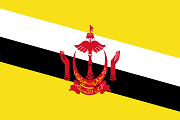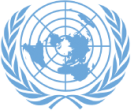Brunei History
From the 14th to the 16th centuries Brunei Darussalam was the seat of a powerful sultanate extending over Sabah, Sarawak and the lower Philippines. Thus, the current Sultan represents one of the oldest continuously ruling dynasties in the world. By the 19th century, the Brunei Darussalam Empire had been whittled away by wars, piracy and the colonial expansion of European powers.
In 1847, the sultan concluded a treaty with Great Britain and in 1888 Brunei Darussalam officially became a British protectorate. In 1906, the Residential System was established in Brunei Darussalam. A British Resident was nominated as a representative of the British government to advise the sultan in all matters except Malay customs, traditions and Islamic religion.
The 1959 Agreement established a written constitution which gave Brunei Darussalam internal self-government. In 1971, the agreement was amended and revised to assert full internal independence except defence and external affairs.
In 1967 His Highness Sultan Haji Sir Muda Omar Ali Saifuddien abdicated in favour of his son Pengiran Muda Mahkota Hassanal Bolkiah. On January 1, 1984 Brunei Darussalam resumed full independence and the Sultan took office as Prime Minister, Finance Minister and Home Affairs Minister, presiding over a cabinet of six. In October 1986, the cabinet was expanded to 11 members, with His Majesty relinquishing the portfolios of Finance and Home Affairs and taking over the Defence portfolio which his late father had held since 1984. In 1988 another reshuffle brought about the elevation of the deputy minister to a full minister and the creation of the Ministry of Industry and Primary Resources designed to boost the country's development.
Land & People
Location
Brunei Darussalam is situated on the north-west of the island of Borneo, between east longitudes 114 degrees 04' and 11 degrees 23' and north latitudes of 4 degrees 00' and 5 degrees 05'. It has a total area of 5,765-sq. km. with a coastline of about 161-km along the South China Sea. It is bounded on the North by the South China Sea and on all the other sides by Malaysian State of Sarawak.
Physical Features
The land surface is developed on bedrock of tertiary age comprising of sandstone, shale and clays. The terrain in the western part of Brunei Darussalam is predominantly hilly lowland below 91 metres, but rising in the hinterland to about 300 metres. The eastern part of the state consists predominantly of rugged mountain terrain, rising 1,850 metres above sea level at Bukit Pagon. The coast has a wide, tidal and swampy plain.
Climate
Brunei Darussalam has an equatorial climate characterized by a uniform high temperature, high humidity and heavy rainfall. Temperatures range from 23 - 32 Degree Celsius, while rainfall varies from 2,500 mm annually on the coast to 7,500 mm in the interior. There is no distinct wet season.
Capital and Town
Brunei Darussalam is divided into four districts namely Brunei/Muara, Tutong, Belait and Temburong. Bandar Seri Begawan is the capital of Brunei Darussalam with an area of about 16 sq. km. The famed Water Village of Brunei (Kampong Ayer) is also located here.
Other towns are Muara, about 41 km to the north east of Bandar Seri Begawan where the chief port is located, Seria which is the seat of oil and gas industry, and Kuala Belait, Pekan Tutong and Bangar which are the administrative centres of Belait, Tutong and Temburong Districts respectively.
Population
The population of Brunei Darussalam in 2004, is estimated at 357,800 persons, the said total, 186,200 are males and 171,600 females.
This estimate includes all people residing in Brunei Darussalam. Malay, which also included Brunei Indigenous communities of Malay, Kedayan, Tutong, Belait, Bisaya, Dusun and Murut, constitutes the major population group numbering at 237,100. Other Indigenous froup is 12,300, Chinese at 40,200 persons and other races not specified at 68,200.
Religion
Islam is the official religion of Brunei Darussalam as stated in the Brunei Constitution, with His Majesty the Sultan and Yang Di-Pertuan as the head of the Islamic faith in the country. Thus Islam plays a central role in the life of every Muslim in Brunei Darussalam. Other faiths practiced in the State include Christianity and Buddhism.
Language & Culture
Language
Official language is Malay. Other languages include English and Chinese (various dialects).
The Culture of Brunei Darussalam
Brunei's culture mainly derived from the Old Malay World, which encompassed the Malay Archipelago and from this stemmed what is known as the Malay Civilisation. Based on historical facts, various cultural elements and foreign civilisations had a hand in influencing the culture of this country. Thus, the influence of culture can be traced to four dominating periods of animism, Hinduism, Islam and the West. However, it was Islam that managed to wound its roots deeply into the culture of Brunei hence it became a way of life and adopted as the state's ideology and philosophy.
Brunei Darussalam is richly endowed with cultural heritage steadfastly maintained until today. The setting up of the Arts and Handicraft Centre in 1975 is a living testimony as to the preservation and the proliferation of the arts and crafts of the bygone days which Brunei was renown for such as boat making, silver-smithing, bronze tooling, cloth weaving as well as mat and basket weaving. Relics and other various artistic heritage of Brunei Darussalam besides the ones mentioned above include Malay weaponry, wood carvings, traditional games, traditional musical instruments, 'silat' (the traditional art of self defence) and decorative items for women. Some of these are kept in the Brunei Museum and the Malay Technology Museum; not only for the world to see but most importantly for today's generation to admire and be proud of, for future generation to emulate, perhaps and something to remind us of our forefather's natural skill, creativity and innovativeness which over generations has been ingrained as one of the richest traditional culture in the Malay world.
Economy
Brunei Darussalam is still very much dependent on revenues from crude oil and natural gas to finance its development programmes. Aside from this, Brunei Darussalam also receives income from rents, royalties, corporate tax and dividends. Due to the non-renewable nature of oil and gas, economic diversification has been in Brunei Darussalam's national development agenda. In the current Seventh national Development Plan, 1996-2000, the government has allocated more than $7.2 billion for the implementation of various projects and programmes.
Brunei Darussalam is the third largest oil producer in Southeast Asia and it produced 163,000 barrels per day. It is also the fourth largest producer of liquefied natural gas in the world.
Land, Labor, and Capital
Although Brunei Darussalam is no giant when it comes to landmass, it has been blessed with rich natural resources and a strategic location within the region. The majority of the country is covered in tropical rainforests teeming with exotic flora and fauna. Anxious to promote the conservation of its lush surroundings, eco-tourism has gained importance in the country's economic activities.
Human resources are central to the successful transformation of Brunei Darussalam into a diversified industrial economy. As in most developing nations, there is a shortage of skilled workforce in the country. Therefore, greater emphasis is placed upon education. The main areas of interest in human resources development are managerial and industrial skills, with particular emphasis on entrepreneurial skills as well as vocational and technical training.
Brunei Darussalam's main exports consist of three major commodities - crude oil, petroleum products and liquefied natural gas - sold largely to Japan, the United States and ASEAN countries. The Government's move to promote non-oil and gas activities has been largely successful with figures showing 64% of GDP in 1996 compared to only 24.3% in 1991.
External Trade
Oil and Gas
Crude oil and liquefied natural gas are the main exports of Brunei Darussalam.
Under a Sale and Purchase Extension Agreement signed by BLNG and the Japanese Buyers in 1993, the LNG Plant at Lumut exports annually about 5.54 million metric tons of LNG to Japan. In June 1998, a further amendment made known as the Sale and Purchase Extension Agreement Amendment had been signed which increased the sales for an additional 14 cargoes per annum to Japan starting from 1999 till the year 2013.
In October 1997, a sale and purchase agreement had been signed to deliver 0.7 million metric tons of LNG to the Republic of Korea until the year 2013. In total, 200 'B' class LNG cargoes equivalent will be delivered annually to the buyers in Japan and the Republic of Korea from the year 1999 to 2013.
In March 1998, the Government of His Majesty the Sultan and Yang Di-Pertuan of Negara Brunei Darussalam formed a Joint-venture company the Brunei Gas Carriers Sendirian Berhad (BGC) with Shell International Gas and Mitsubishi Corporation.
Currently, Brunei LNG Plant processes natural gas supplied from offshore gas fields owned by the Brunei Shell Petroleum Company Sendirian Berhad. From 1st April, 1999 LNG will receive additional natural gas from a non-Brunei Shell owned Maharajalela Jamalulalam Field.
Oil and Gas accounted for about 36% of the country's Gross Domestic Product in 1996.
Currency:
The unit currency is the Brunei dollar, divided into 100 cents.
Exchange Rate: US$1.00 = B$1.6838
Information and Images provided by: www.brunei.gov.bn


